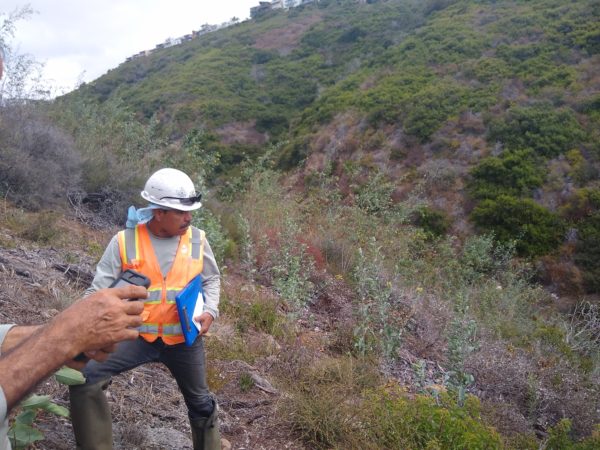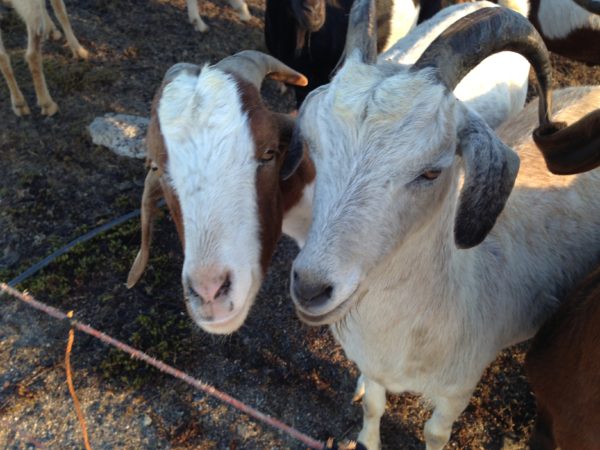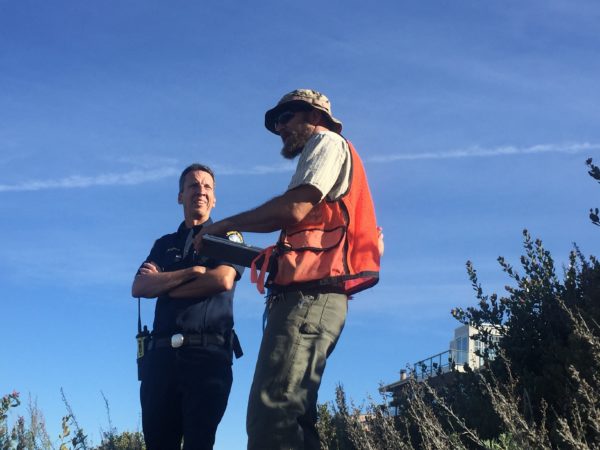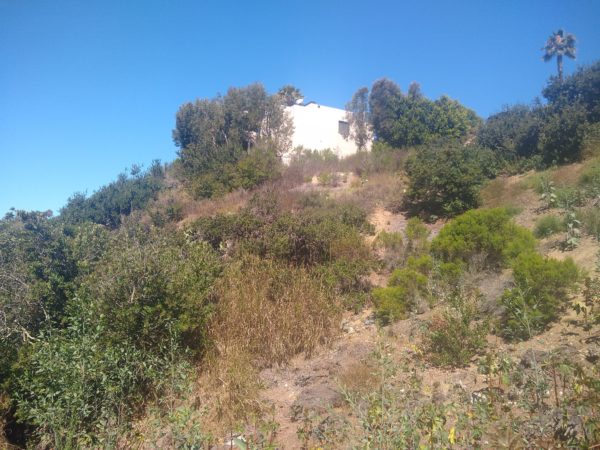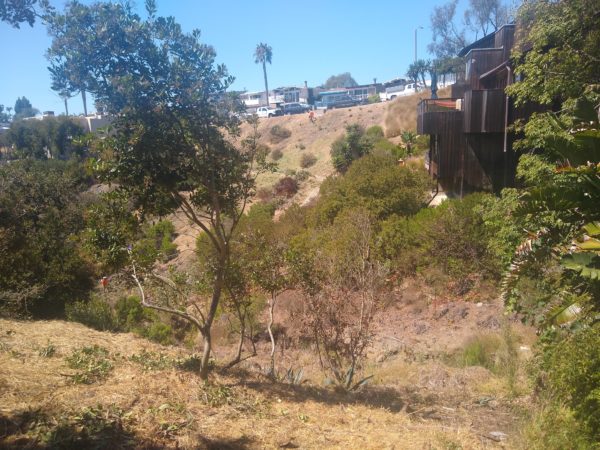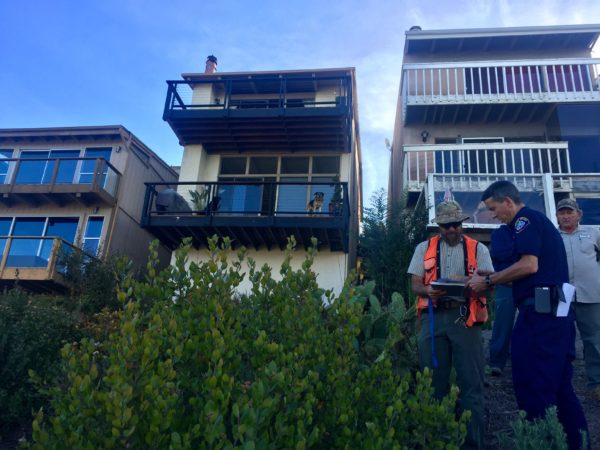For the past five years, Laguna Canyon Foundation has been partnering with the Laguna Beach Fire Department on their “fuel modification” program. No, we aren’t experimenting with a new mix that will give you better mileage in your car—the “fuel” in this case refers to vegetation that has the potential to burn in a wildfire. Using a combination of methods, we are managing the vegetation in the canyons and slopes adjacent to neighborhoods and businesses to reduce fire behavior potential in these by approximately 70%. While we can never completely eliminate the threat of damage to life and property from wildfires, and homeowner measures (including fire-hardening the structures themselves) are still required, the objectives of these projects are to allow an extra margin of time for neighbors to evacuate and to help create a defensible space for firefighters to be able to better protect the threatened structures in case of a wildfire.
While we love our goats (and the fact that they are much less expensive than a skilled hand crew), they aren’t the most appropriate tool for areas with high levels of habitat value, since they’re not very discriminating about which plants they eat. For these ecologically valuable and sensitive areas, it is important to use a “kinder, gentler” method of vegetation management in order to accomplish fire safety objectives while preserving as much of the habitat and aesthetic values as possible, and while complying with all applicable environmental laws and rules. This is where Laguna Canyon Foundation comes in.
Our role in these projects includes surveying for sensitive plants and nesting birds before the work begins, neighbor communications, flagging the areas to be treated (and also flagging sensitive plant species for the crew to avoid), working with skilled, specially trained hand crews to implement the treatment protocol that has been developed by LCF, LBFD and other partners and approved by the Coastal Commission and wildlife agencies, and conducting annual photomonitoring to document the results.
The treatment protocol consists of several steps. First, dead plant material and invasive, non-native plants (such as tree tobacco, castor bean, mustard, fennel, pampas grass and many others) are cut and removed from the site. In areas with lots of native vegetation, some native plants are then carefully removed to reduce the vegetative cover to 50% or less and break up the continuity of the remaining “fuels.” These native plants are removed according to a species list, removing the species with the highest fire behavior potential and lowest habitat value first, and then working down the list until the cover target is reached. Finally, larger native shrubs such as lemonade berry, toyon, and laurel sumac are pruned to remove “ladder fuels,” the lower branches that can allow fire to spread from the surface into the crowns. The crew uses a variety of tools to accomplish this work, from chainsaws and brush cutters to loppers and machetes.
Cut native vegetation is then lopped and scattered in the resulting openings to act as mulch, helping to protect the soil from erosion and prevent the germination of annual weeds and grasses. Special care is taken to ensure that this material is cut into small pieces and lays close to the ground to minimize its potential to carry a fast-moving fire. In steep areas where there is little remaining cover once the weeds are removed, erosion control measures (such as straw wattles, jute netting or seeding appropriate native plants) are installed.
Once a fuel modification zone is installed, it must be maintained on a regular basis to retain its fire safety benefits. LCF monitors the condition of the hand-thinned areas and coordinates maintenance when necessary, including weed management and additional thinning to maintain the 50% vegetative cover target.
The City of Laguna Beach’s fuel modification program is expanding to cover additional high fire danger areas throughout the city. Two additional areas in South Laguna were treated this summer, and, with the assistance of a $3.1 million grant from CalFire, additional fuel modification zones will be added behind homes and businesses over the next couple of years along Laguna Canyon extending from the Village Entrance, behind the Canyon Acres neighborhood and all the way to El Toro. Once these come online, there are several other areas waiting in the queue.
Laguna Canyon Foundation is proud of what has been achieved on these projects and looks forward to continuing and expanding our collaboration with LBFD.

